The park was founded not too long after the decisive victory of the North in the American Civil War; as this victory was apparently won by mass-produced weapons rather than by courage, so it was believed that strong manufacturing was essential for the future security and growth of the Republic. This meant that the cities were to grow to immense size. The often ugly and squalid conditions found in big cities led to the development of large public parks, which offer a retreat from urban noise, crowds, and pollution.
See the companion article Forest Park at Sunrise.
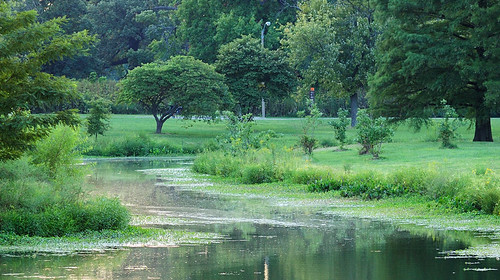
Forest Park is home to the zoo, and the art and history museums, as well as golf courses and ball fields, but here I will concentrate my photos on the watercourses that snake through the park. Once the valley of the River des Peres, these picturesque waterways are artificially maintained via pumped water, while the actual river runs through concrete tubes underground.
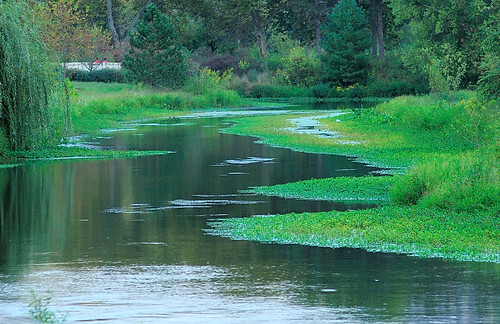
These photos were taken around sunset, about a week ago.
I fixed the white balance of the camera to ‘daylight’, so that my viewers can get some idea of the changing color of light as the day waned. Also, I used an antique fixed-focal length lens, so all these photos have similar perspective and compression of distance.
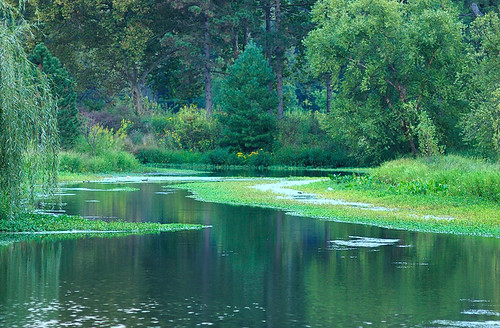
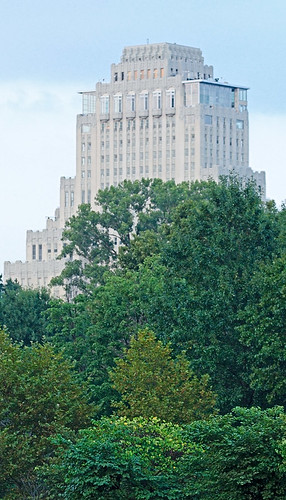
The Park Plaza. The east and west sides of the park are lined with tall buildings.
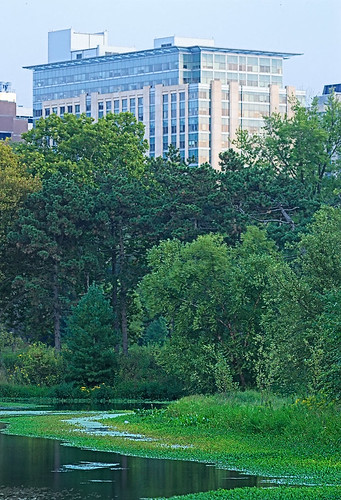
A hospital.

A fountain, in the middle of Round Lake.
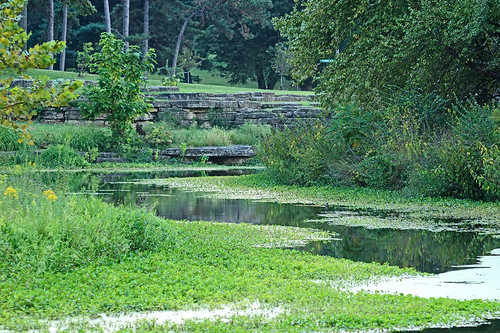
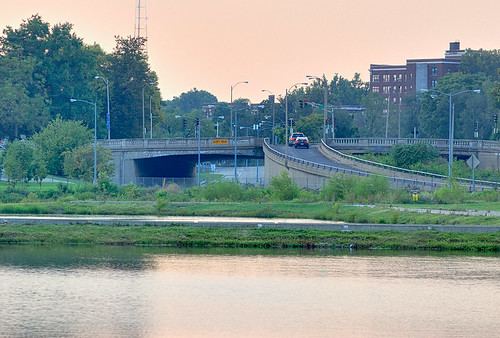
The Forest Parkway runs through the park.
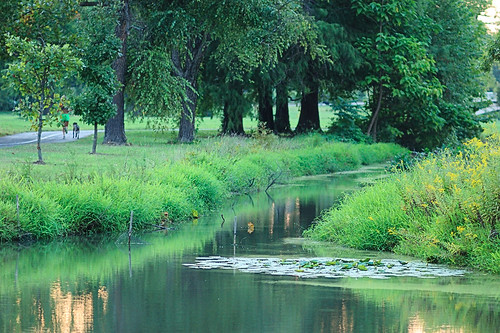
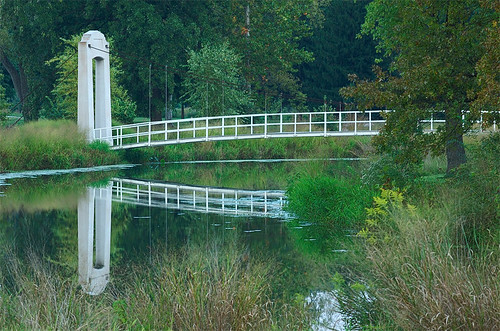
A suspension bridge. This is one of my favorite photos from that evening. Where are Monet and his water lilies?
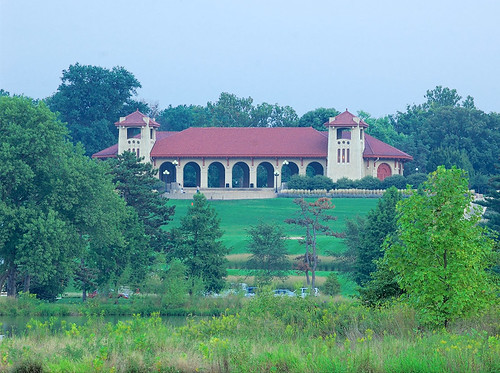
World's Fair Pavilion.

Paddleboaters enjoy the evening. These are available for rent at the Boathouse. However, consider renting a rowboat instead; the paddleboats are very uncomfortable to paddle if you are tall or heavy.
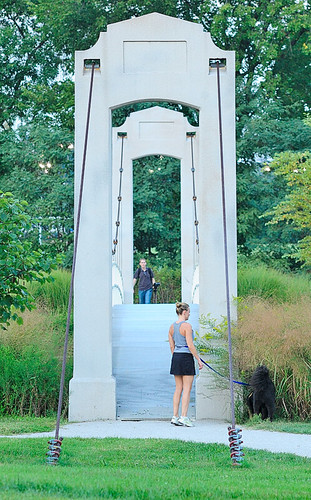
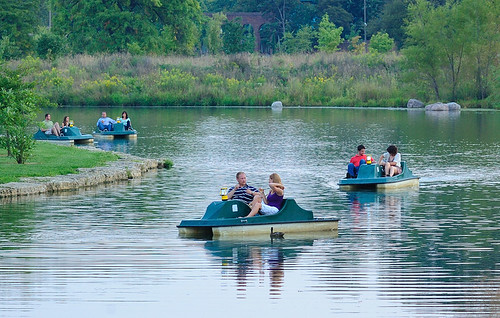
More paddleboaters.
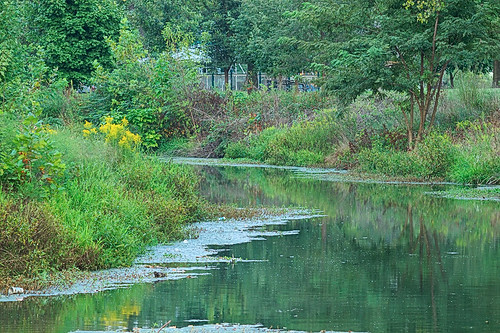
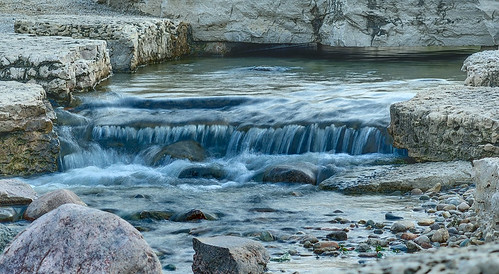
A constructed waterfall.
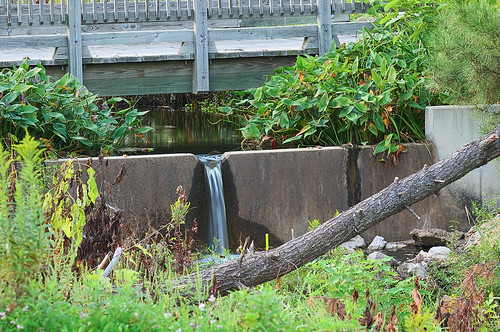
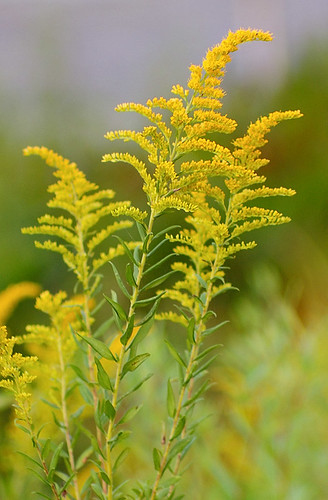
Is this goldenrod?
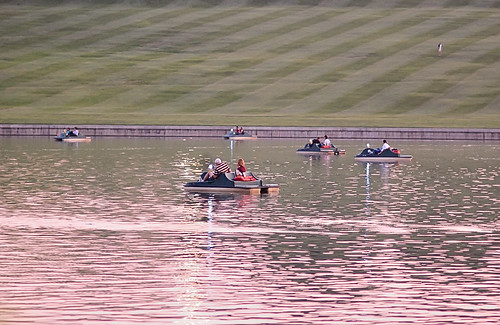
More boats in the Grand Basin. In the background is the large lawn of Art Hill, used in Winter for sledding: hay bales are placed along the lake edge to stop out-of-control sleds from plunging into the lake.
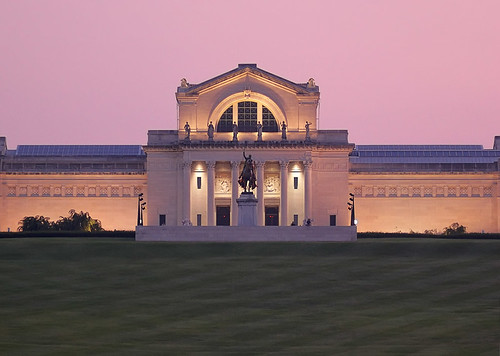
Art Hill rises up to the Saint Louis Art Museum. In front is a statue of Saint Louis IX, King of France.
Also see my article Forest Park at Sunrise.


Which lens were you using, might I ask? Seems like 35mm or 50mm... but I can't be sure.
ReplyDeleteAlso, I do think that's goldenrod you captured in the middle of this series.
Goldenrod it is; a common garden ornamental. You may have been wondering because of the plant's reputation as an inducer of hay fever: but contrary to common perception, goldenrod is usually not responsible; the pollen is too heavy to stay airborne long, unlike the simultaneously flourishing ragweed, with much finer pollen. Goldenrod is showier though, so gets the blame.
ReplyDelete